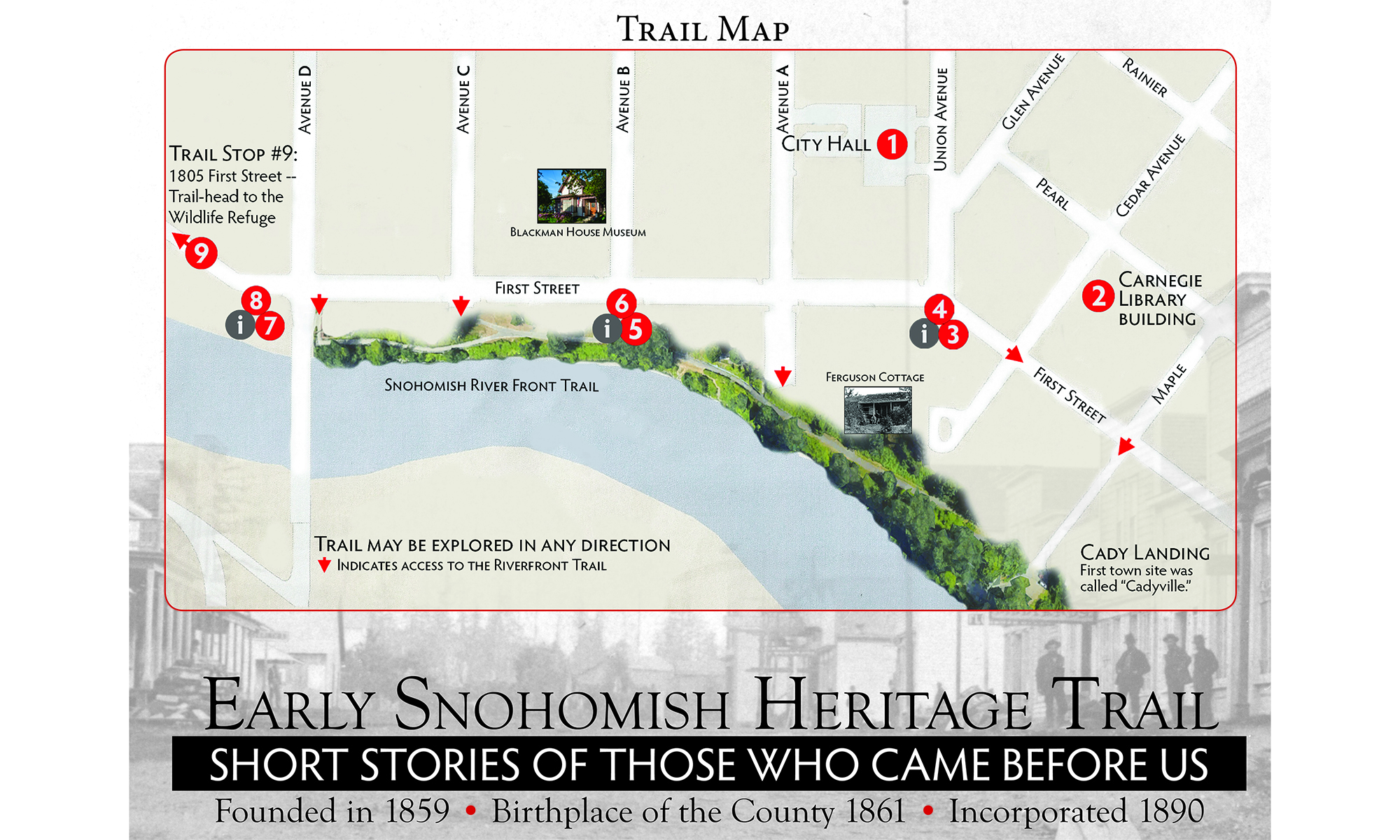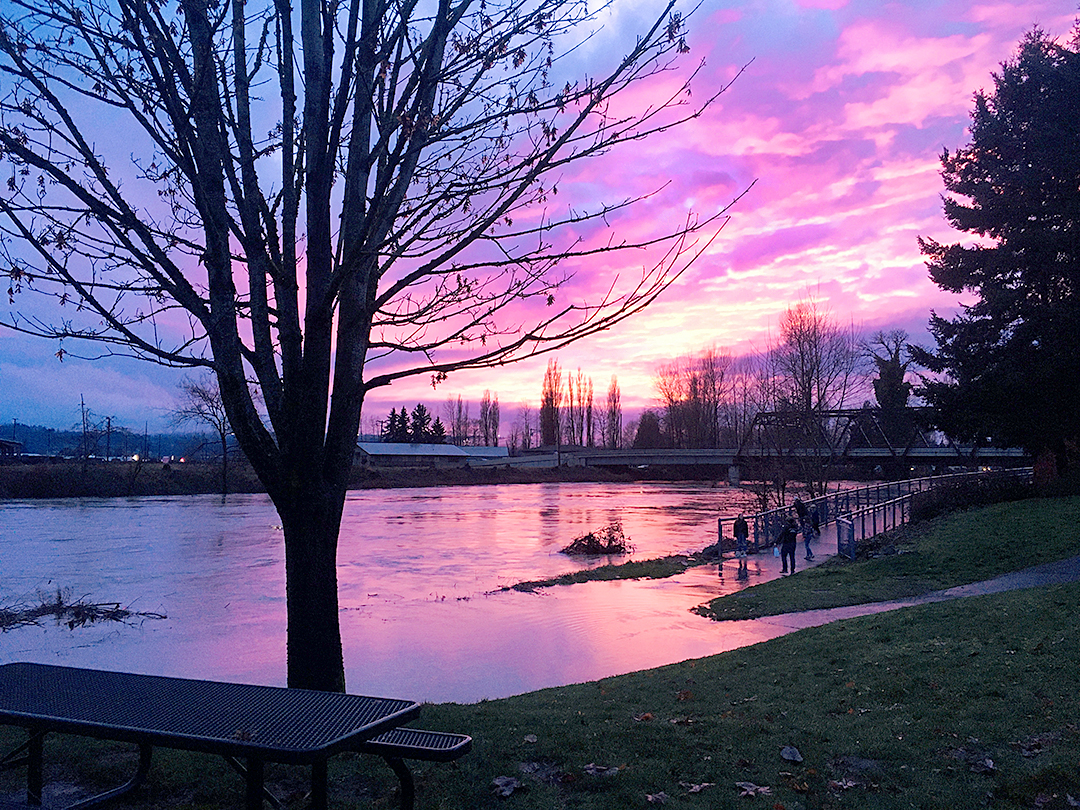The oldest element in our historic town is pretty much ignored most days until it flows free of its boundaries — then we come to watch the Snohomish River.
Over the years, I have adopted Kla Ha Ya Park, a riverfront park below First Street between Avenues B and C in Historic Downtown Snohomish, as a place to practice Tai Chi. For me, it’s a place to appreciate the historic beginnings of our town, and I’m not alone these days. Since the flooding began on the winter solstice (pictured above), people have been coming to check out the rising river. Some stand with their toes right up to the edge, others further back to snap a wide shot to share on social media.
On Sunday morning, the second day of February, I went a step further and set up my camera to capture my practice of Tai Chi alongside the rushing river several feet above the riverfront trail, and very close to my spot of green in the park
Our riverfront park with the odd name translated as Welcome is the proud product of community action rising up from the destructive powers of fire and water.
The first commercial buildings of 19th-century Snohomish were built of wood and on the riverside of Front Street, the buildings were built on tall wooden pilings, some 20 feet high, in order to bring the structures up to the street level.
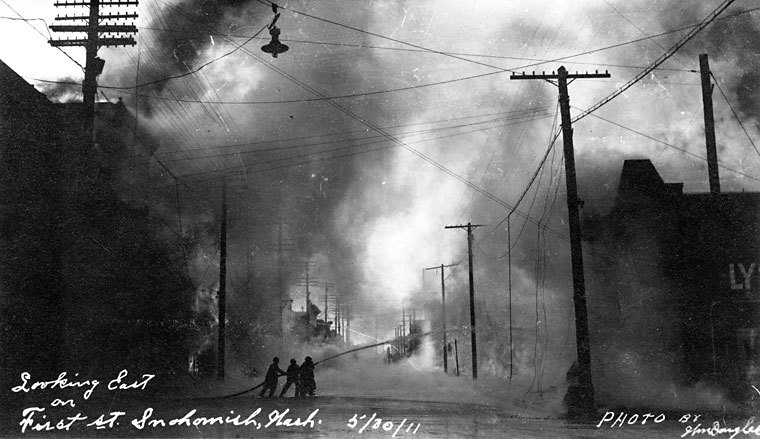
The Great Fire of 1911 destroyed all the buildings on both sides of the street between Avenues B and C. As if named from a Dickenson novel, the three-story Burns Block at 1118 First Street built of brick in 1890, stopped the fire and saved the two wooden buildings still standing as neighbors to this day.
Read: The Building That Stopped a Fire!
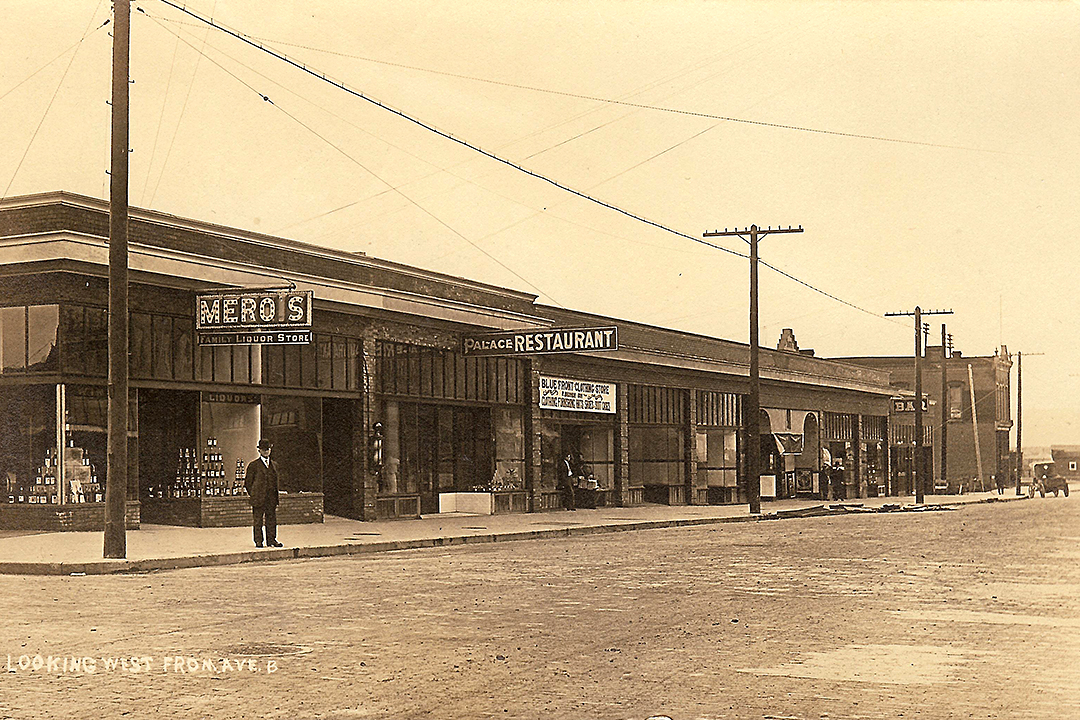
Block 2 rebuilt of brick, courtesy David Dilgard, Northwest Room, EPL.
Both sides of the street were quickly rebuilt of brick, the south side completely (pictured above). Snohomish was railroad rich around this time as the Milwaukee Road had just begun passenger service on its line running on a trestle built over the north bank. The building at the far end of the photograph was the former Wilbur Drug Store, which became a train depot.
Instead of wooden pilings, the brick buildings were brick all the way down to the foundation, and flooding over the years weakened the brick foundations. In the early 1940s, the liquor store, and the restaurant had become home to Poier Motors, the local Chevrolet dealer in town and a floor displaying a new model collapsed toward the river, nearly killing an employee. The entire block of brick buildings was condemned immediately. The storefront structures remained vacant for over 15 years.
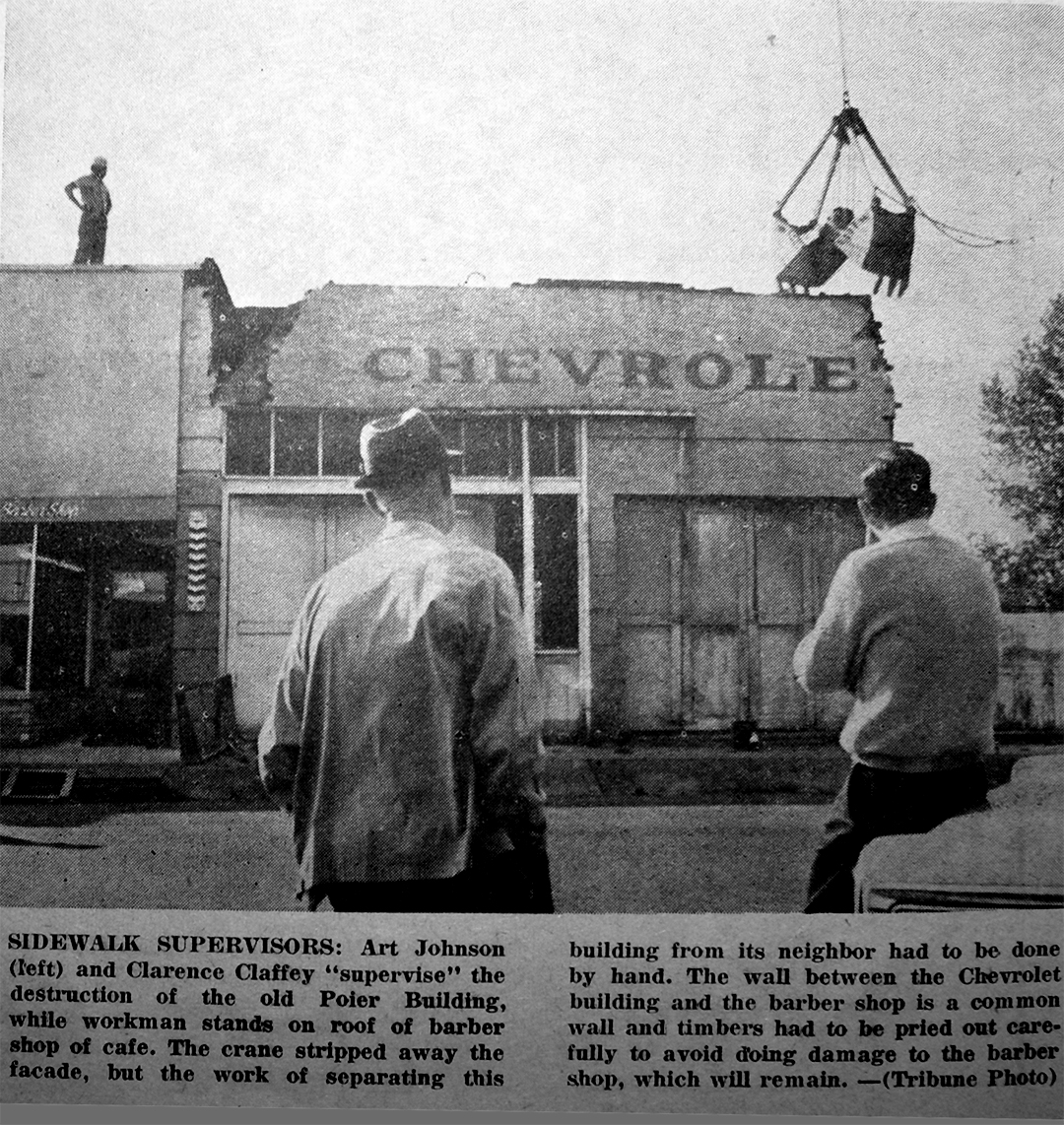
It was not until 1965 that funds were appropriated to finally tear down the abandoned structures and community groups rallied to create a riverfront park.
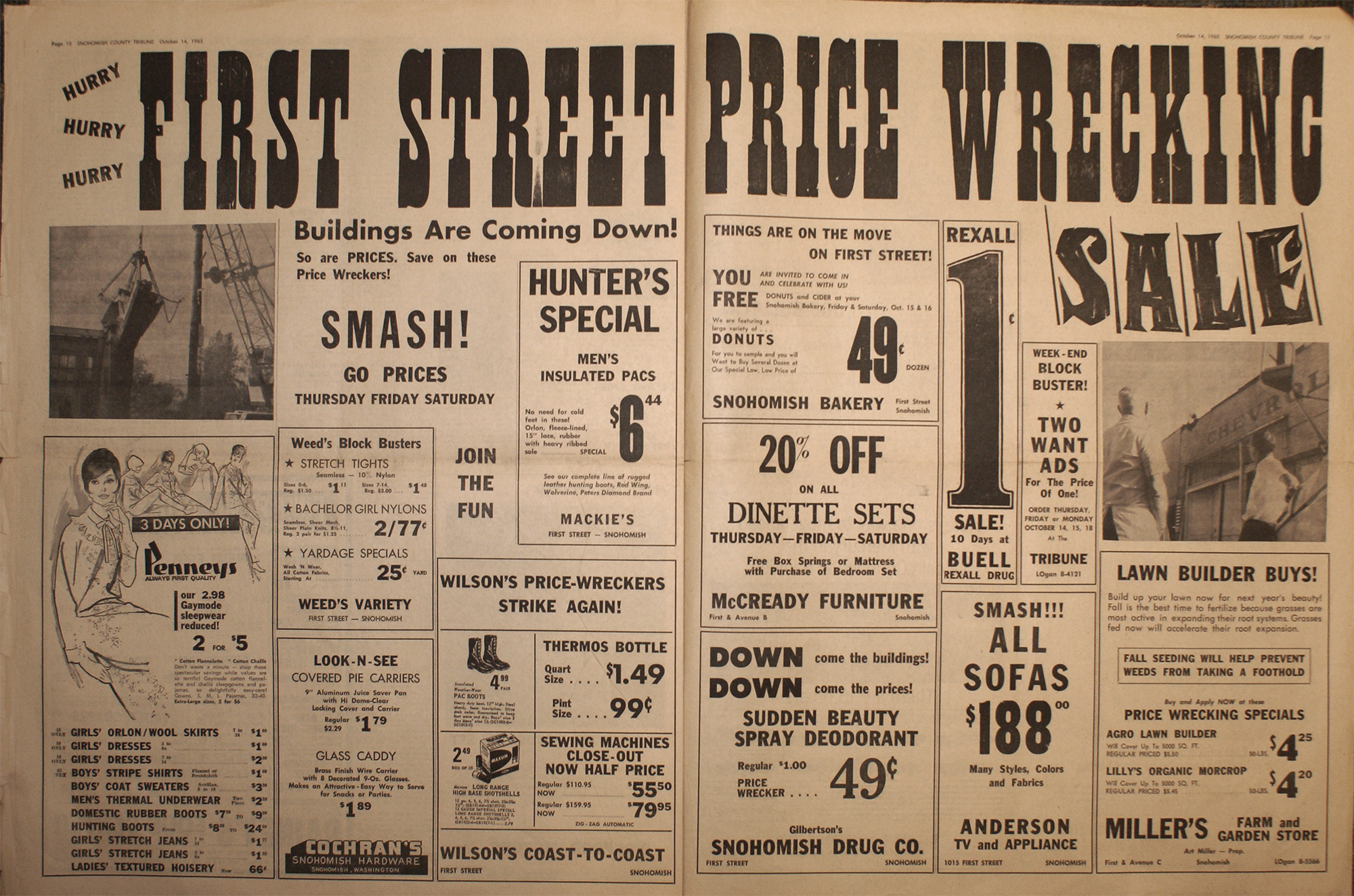
We imagine the former editor of the Tribune, Bill Bates, sold this ad idea to the business community.
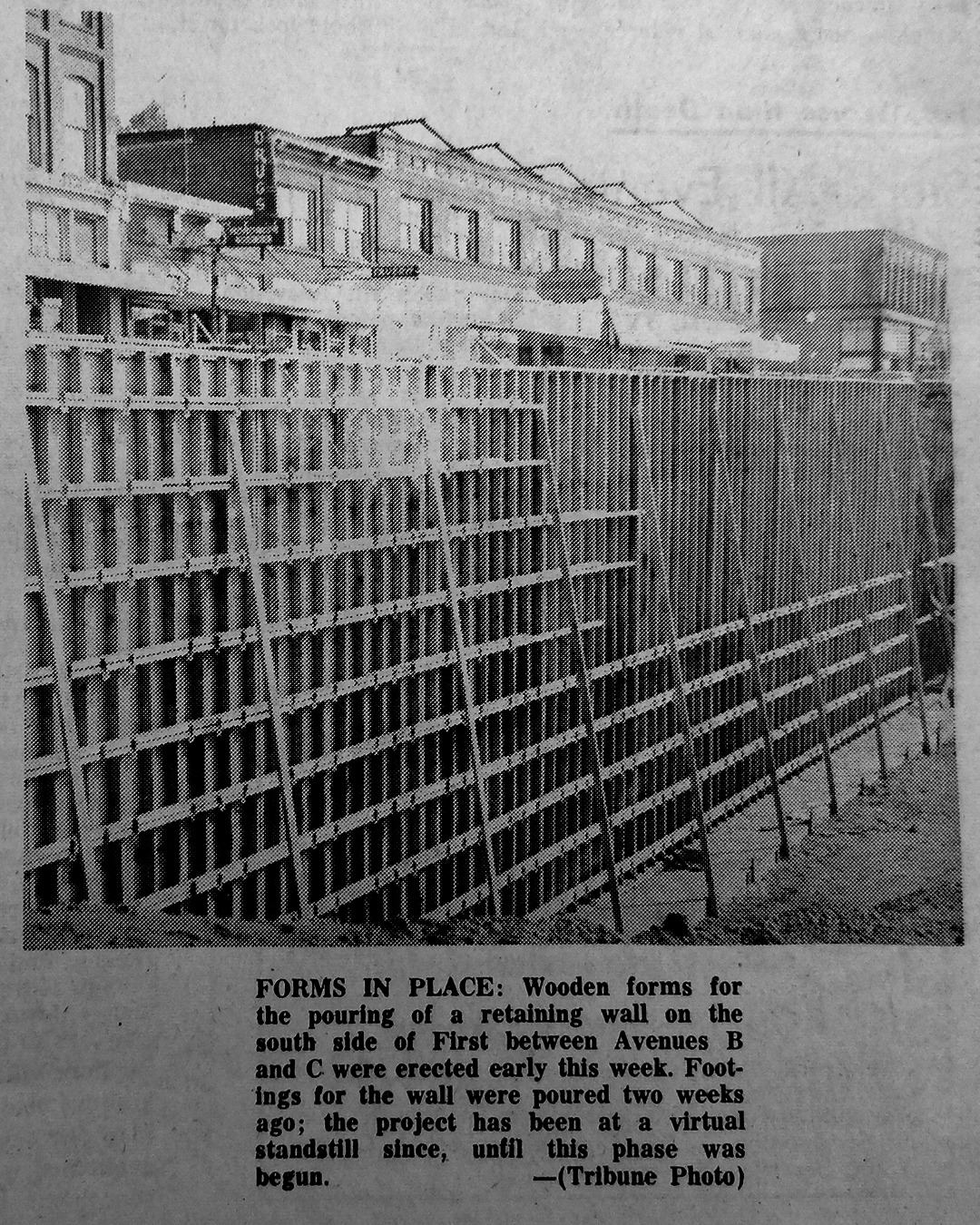
Published in the Tribune, date unknown.
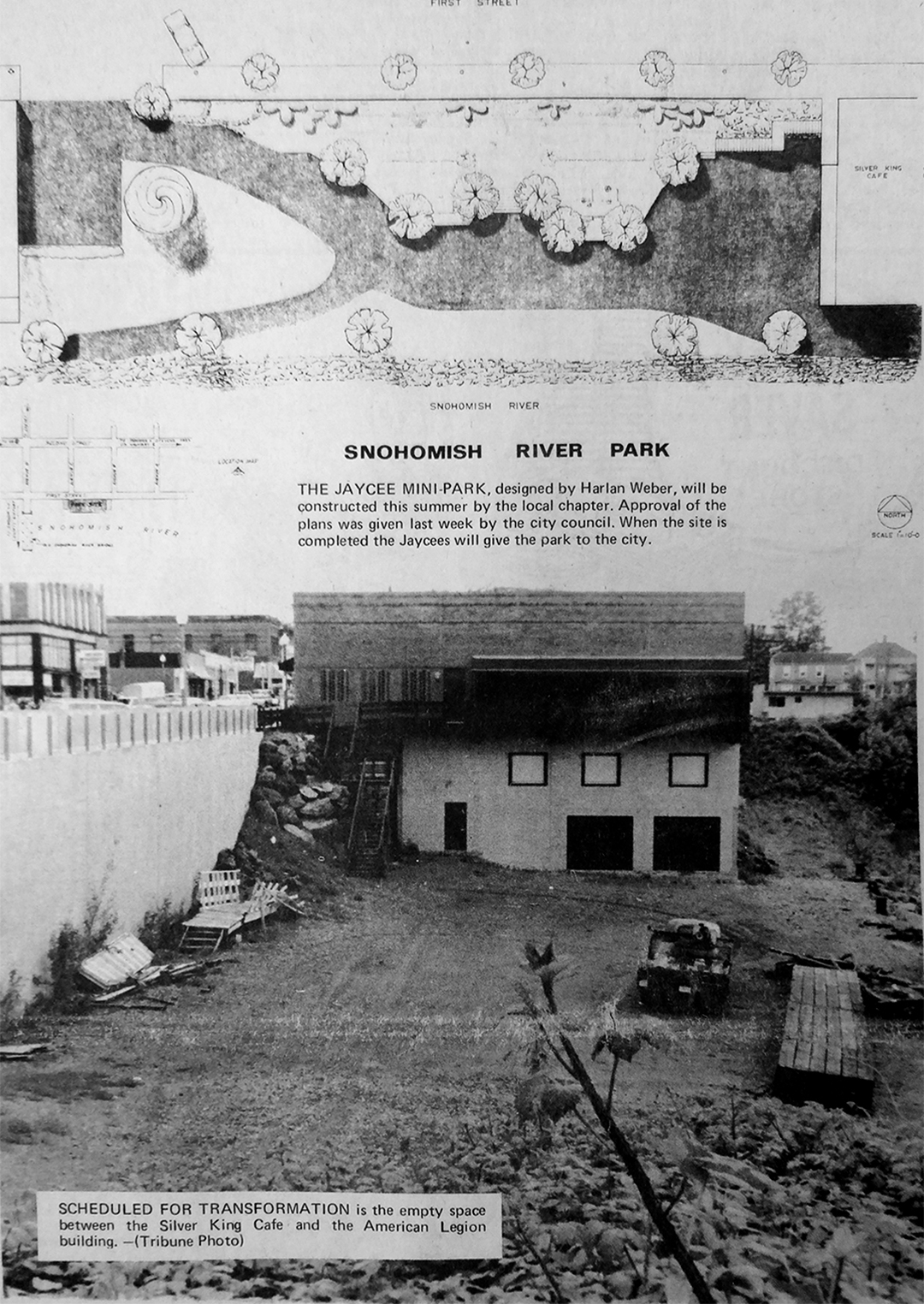
Front page photo published in the May 25, 1972 issue of the Tribune.
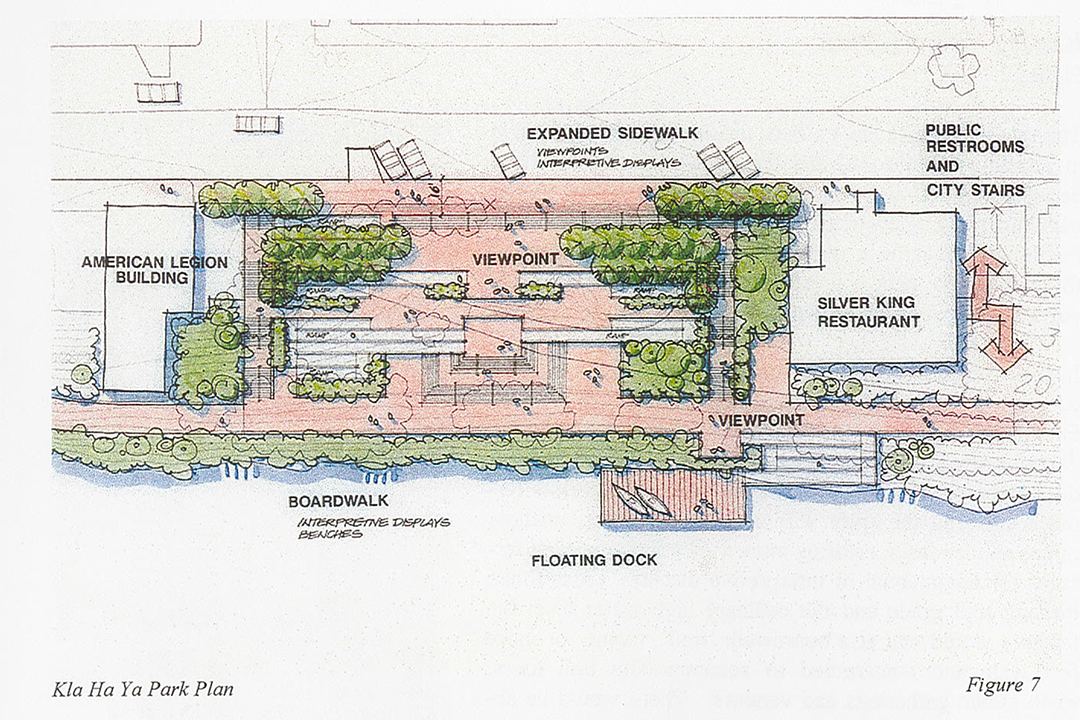
The River Front Trail, such as it was, was severly damaged in the 1995 flood which led to the master plan linked below. The plan includes this sketch for Kla Ha Ya Park that would feature sitting areas and ramps leading down to the water.
Download: 1998 Snohomish Riverfront Master Plan, Kla Ha Ya Park discussion begins on page 29.
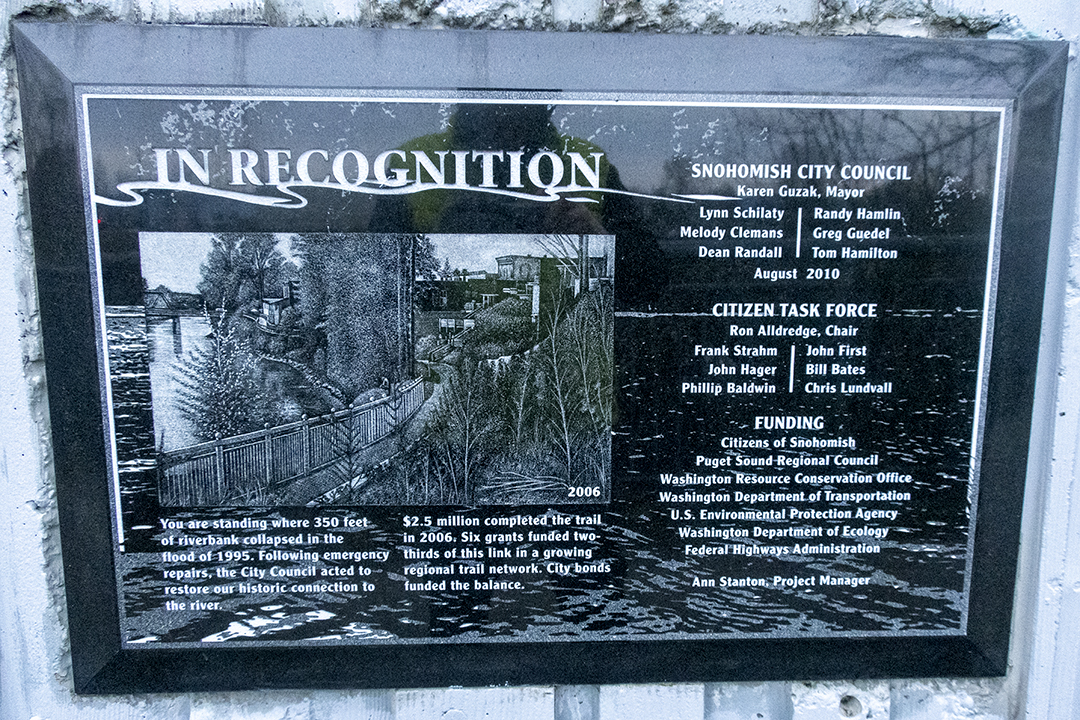
One of several informative plaques on the Riverfront Trail, which was based on the master plan, the trail as we know it today opened in 2006.
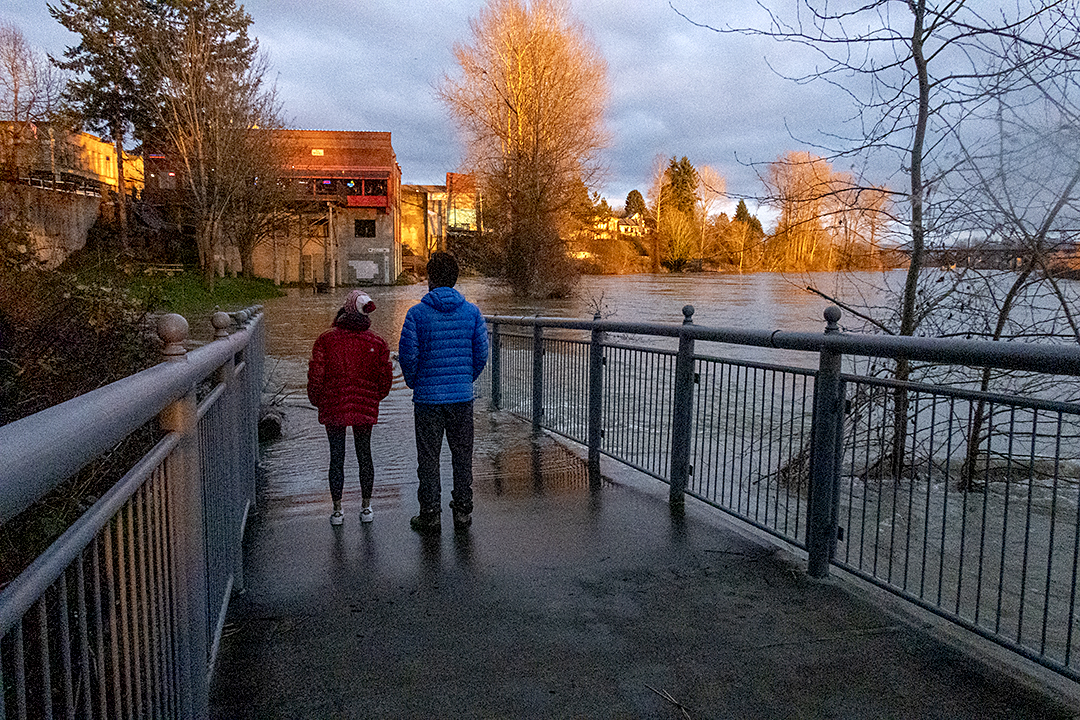
Captured Saturday, February 8th from the ramped section of the trail that is meant to honor the history of the railroad that once followed this route on a wooden trestle.
